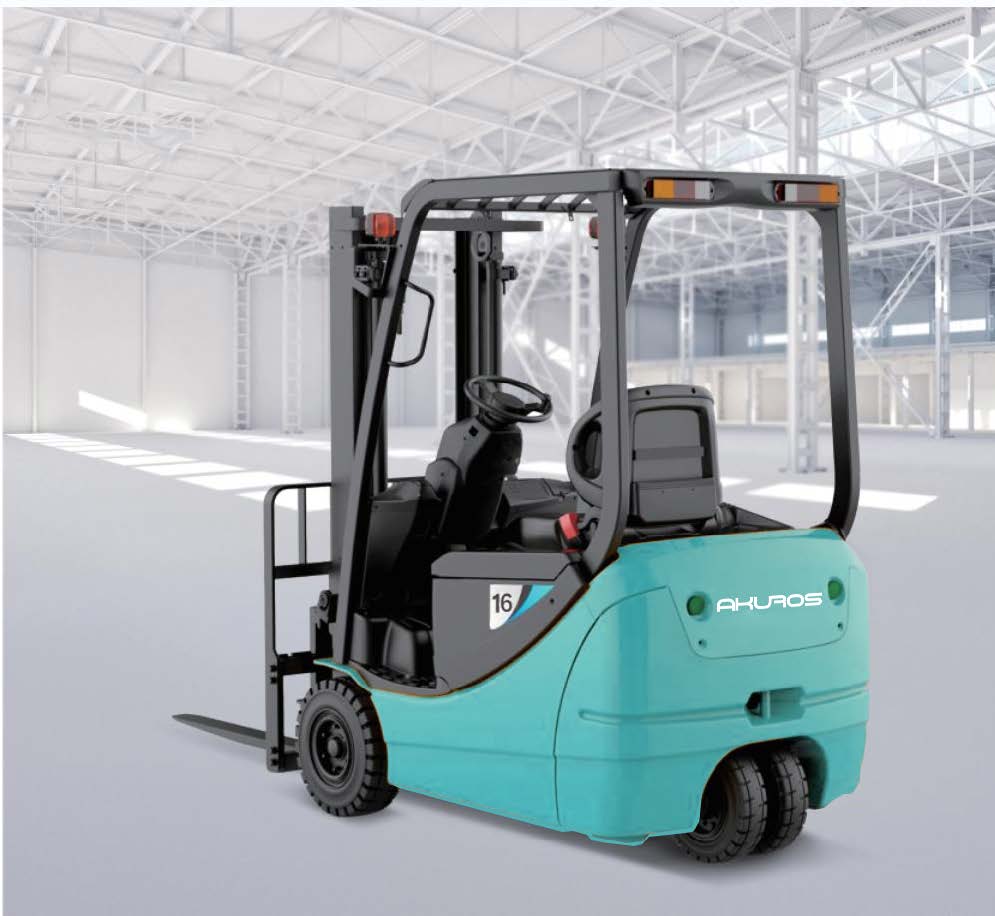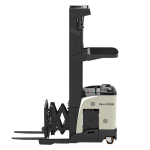Choosing the right forklift is one of the most critical decisions for any warehouse, logistics, or manufacturing operation. The right equipment not only impacts your productivity but also affects your long-term operating costs, environmental footprint, and worker safety.
Today’s forklift market is largely divided between electric forklifts e internal-combustion (IC) forklifts—each offering distinct advantages depending on your operating environment and business needs. This guide will help you understand the key differences between the two and decide which option is best for your facility.
1. Understanding the Two Power Types
Electric Forklifts
Electric forklifts are powered by rechargeable batteries—typically lead-acid or increasingly lithium-ion. They’re designed for quiet, clean operation, making them ideal for indoor environments such as warehouses, retail distribution centers, and manufacturing floors.
They are gaining popularity worldwide due to their low emissions, high efficiency, and the rapid advancement of lithium-ion battery technology that allows longer run times and faster charging.

Internal-Combustion Forklifts
IC forklifts use diesel, gasoline, or LPG (liquefied petroleum gas) engines. These machines are known for their power and ability to operate in demanding outdoor conditions, such as construction sites, ports, and heavy-duty manufacturing yards.
They’re preferred where long shifts, uneven terrain, or heavy loads are common—especially in regions where refueling infrastructure is readily available.
2. Performance Comparison
When it comes to power and capability, each type of forklift brings unique strengths.
Power & Lifting Capacity
IC forklifts generally provide higher torque and lifting capacity, which makes them suitable for heavier loads (above 5 tons) and steep gradients.
Electric forklifts, however, have made significant progress in power output—modern 4-wheel electric counterbalance models can now match IC performance for most standard warehouse tasks up to 3–5 tons.
Operation Efficiency
Electric forklifts deliver instant torque, meaning smooth acceleration and precise control—especially valuable in narrow aisles or precision stacking applications.
IC forklifts excel in continuous heavy-load operations and outdoor performance, maintaining stable power over long shifts without the need for charging downtime.
Maneuverability
Electric models, particularly 3-wheel counterbalance forklifts like the Akuros E16, offer superior turning radii and responsive control. They’re perfect for tight indoor spaces, where every centimeter of maneuvering counts.
IC forklifts, being larger and heavier, are better suited to open outdoor environments.
3. Cost Analysis
Initial Investment
Electric forklifts usually have a higher upfront cost, primarily due to battery and charging equipment. However, this is offset over time through lower operating expenses.
IC forklifts are cheaper to purchase initially but incur higher long-term fuel and maintenance costs.
Operating Costs
Electric forklifts consume electricity instead of fuel—cutting energy costs by 30–70% compared to LPG or diesel. Their maintenance costs are also lower since they have fewer moving parts and no oil, filters, or exhaust systems.
IC forklifts require frequent servicing, including engine maintenance, filter replacement, and fuel system checks.
Total Cost of Ownership (TCO)
Over a 5- to 7-year period, electric forklifts generally have a lower total cost of ownership, especially in multi-shift indoor operations.
However, if your work environment demands continuous, heavy outdoor use with minimal downtime, IC forklifts might remain more cost-effective.
4. Environmental & Safety Considerations
Electric forklifts are zero-emission at the point of use, making them compliant with indoor air quality standards and sustainability goals. They also operate almost silently, reducing noise pollution and improving operator comfort.
In contrast, IC forklifts produce exhaust emissions (CO₂, NOx, and particulates), requiring proper ventilation when used indoors. They also generate more noise and vibration, potentially leading to operator fatigue.
Many companies are transitioning to electric models not just for cost efficiency, but also to meet ESG (Environmental, Social, and Governance) targets and reduce their carbon footprint.
5. Technology & Battery Advancements
Battery technology has evolved rapidly in recent years. Lithium-ion forklifts—like Akuros’s E16 series—offer:
-
Fast charging (often within 1–2 hours)
-
Longer cycle life (up to 4000 cycles)
-
Zero maintenance compared to lead-acid batteries
-
Consistent power output, even at low charge levels
Smart Battery Management Systems (BMS) monitor cell health, temperature, and charge levels in real time, extending the battery lifespan and preventing downtime.
In contrast, IC engines have seen fewer innovations, primarily focused on emission reduction and fuel efficiency rather than performance leaps.
6. Choosing the Right Forklift for Your Business
When deciding between electric and IC forklifts, consider these key factors:
| Criteria | Electric Forklift | Internal-Combustion Forklift |
|---|---|---|
| Environment | Indoor / Clean floors | Outdoor / Rough terrain |
| Emissions | Zero | CO₂, NOx emissions |
| Noise Level | Baixa | Moderate to high |
| Operating Cost | Lower (electricity) | Higher (fuel) |
| Maintenance | Minimal | Frequent |
| Power & Torque | Moderate–High | Very High |
| Upfront Cost | Higher | Lower |
| Downtime | Charging required | Quick refuel |
| Best Use Cases | Warehousing, logistics, retail | Construction, ports, heavy industry |
7. Real-World Application Examples
-
E-Commerce Warehouses: Electric forklifts dominate, offering quiet, emission-free operation suitable for clean indoor facilities.
-
Fabrico de automóveis: Electric forklifts are favored for precision handling and integration with automated systems.
-
Outdoor Logistics & Ports: IC forklifts still lead where power and endurance are critical, especially for long shifts.
-
Instalações de armazenamento a frio: Lithium-powered electric forklifts perform reliably even in sub-zero environments.
Akuros’s E16, for instance, is engineered for precision control, energy efficiencye robust performance—a perfect fit for dynamic indoor logistics.
8. Frequently Asked Questions (FAQ)
Q1: How long can an electric forklift operate on a single charge?
Depending on the model and battery type, most electric forklifts can run 6–8 hours per charge. Lithium-ion versions often support opportunity charging during breaks.
Q2: Can electric forklifts be used outdoors?
Yes, but only in moderate conditions. They’re best suited to paved outdoor areas and light weather exposure, while IC forklifts handle rough or uneven terrain better.
Q3: What are the main maintenance differences?
Electric forklifts require little maintenance—no oil changes, spark plugs, or exhaust systems. IC forklifts demand regular servicing of engines, filters, and emissions systems.
Q4: Is switching to electric forklifts worth it for my warehouse?
If your operations are mostly indoors and focused on cost efficiency, safety, and sustainability, electric forklifts—especially lithium-ion models—offer excellent ROI.
9. Conclusion
The decision between electric and internal-combustion forklifts depends on your environment, workload, and sustainability goals.
Electric forklifts deliver cleaner, quieter, and more cost-efficient performance—perfect for modern logistics and manufacturing operations. IC forklifts, on the other hand, remain indispensable for outdoor, high-power applications.
At Akuros, we design forklift solutions like the E16 Electric Counterbalance Forklift to bridge this gap—combining precision handling, lithium-ion efficiency, and operator comfort in one advanced package.








